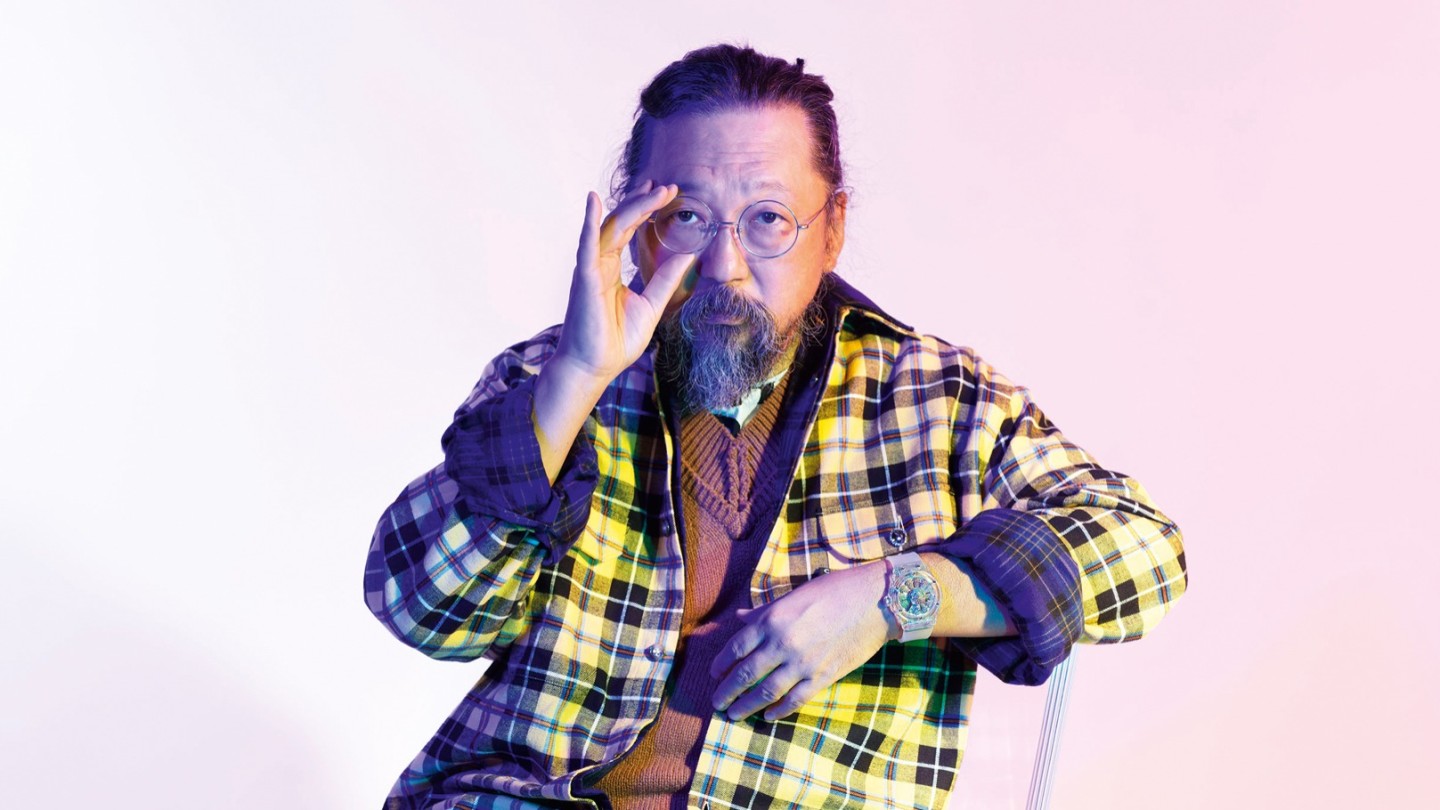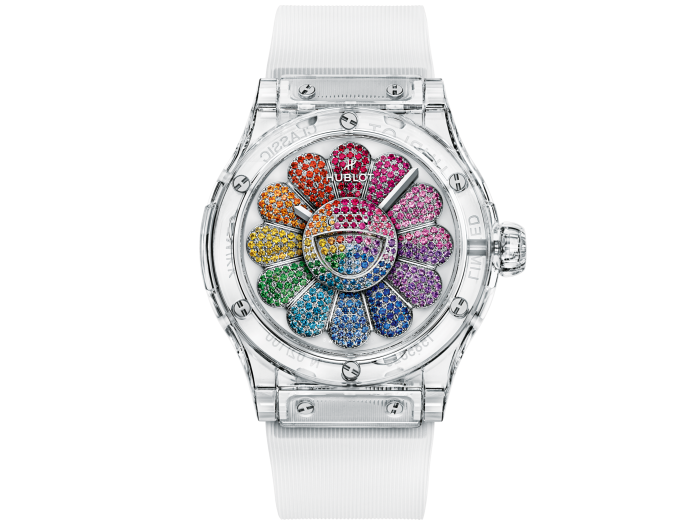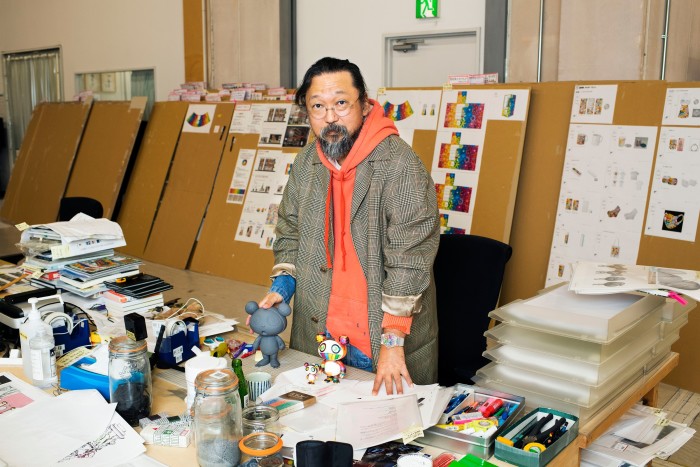What happened when Murakami met Hublot?

Roula Khalaf, Editor of the FT, selects her favourite stories in this weekly newsletter.
Wearing his spectacles perched above his eyebrows and his hair swept into a bun, Takashi Murakami is giving me a video tour of his hangar-like studio in Miyoshi, near Tokyo. At one end of the brightly lit space – which contains stacks of paintings, works in progress and his bed (yup, he sleeps here) – he pauses and gestures towards a large sculpture of a glittering, kaleidoscopic flower with a beaming face. “This is completely handmade,” he says, speaking through a Japanese translator. “It looks like the Hublot collaboration, right?”

Indeed, his new project for the LVMH-owned watchmaker takes the 59-year-old Japanese artist’s euphoric pop aesthetic and channels it into something that sparkles on the wrist. The Classic Fusion Takashi Murakami Sapphire Rainbow watch, released in a limited run of 100 pieces, is a riot of colour featuring his beloved smiling flower motif: a dazzle of 487 rubies, amethysts, deep-green tsavorites and pink, blue, yellow and orange sapphires.
This is Murakami’s second piece for Hublot; his first, released in January this year, also featured the flower but it was all-black and surprisingly sombre. His second design is a return to his characteristic flair. There’s a transparent 45mm polished-sapphire case that renders the watch a skeleton, with all its screws and mechanisms on show. Against this backdrop, the rainbow flower pops. A 3D form, it rises from the dial and its petals rotate like a child’s paper pinwheel. Gloriously upbeat, it represents his vision of “a Shangri-La or heaven in Japanese anime culture”, says Murakami, who, when creating the watch – as he does when making his art – was thinking about the end collector and how to transport them “beyond their fantasy”.

The Hublot partnership appealed to him because, unlike most requests he receives from watch brands, it went deeper than “just putting patterns” on packaging. Murakami, who’s been called Japan’s Andy Warhol, is a master of successful commercial collaborations that blur “high” and “low” culture: he’s dreamt up everything from Crocs to handbags to sparkling-water bottles for Perrier. When he teams up with a brand, though, he wants to get properly stuck in. “I’m usually working in my studio from morning to night, but when I do a collaboration, I can go peek into other people’s workplaces and breathe in the fresh air,” he says.
He did just that when, in early 2020, he visited Hublot’s workshop in the Swiss town of Nyon. He enjoyed seeing the fact that, with watchmaking, “there are the technicians who really care about the precision,” he says. “They are transforming ideas into something tangible but they care about each tiny little screw.” Something about that technical fastidiousness is “in opposition to the worldview of art”, he says, “and I love that.”
However, he sees clear parallels between the art and luxury-watch worlds. “Because each piece is so expensive, everyone is really, really serious,” he says. “Everyone’s constantly angry: about how they can’t buy a work, something is too expensive, something has broken; with my artworks there’s always a complaint about something being scratched, or that there are too many editions.”
Far from getting him down, he relishes the challenge of meeting these exacting standards – whether with a showstopping painting or a twinkling £88,000 watch. “When [these serious] people smile and say, ‘Oh, this is great,’” he says, “that’s the moment I feel like I’ve won.”
Comments